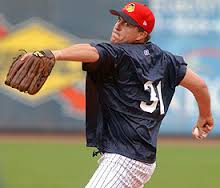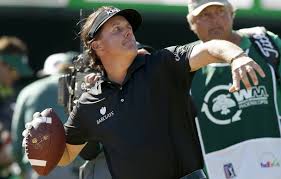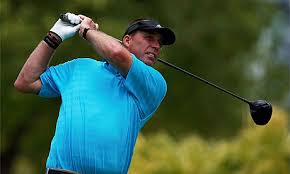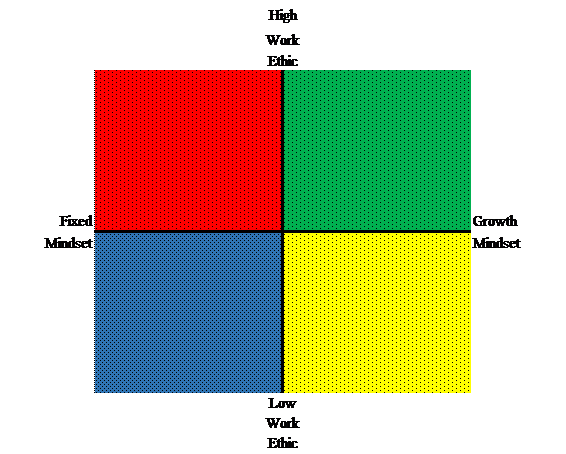Why we need more sophisticated methodologies to analyze handedness in our children
By Walter Oden
Introduction
As I have started to wrap our summer of tennis camps, I have an observation about children. The younger the child, the less obvious hand dominance is present. On the other hand, there are some markers. Why do we care? Don’t children naturally gravitate to their genetic handedness? Parents are often very sensitive to their child using the “correct” hand. My goal is to present some theory to help you understand handedness.
The Premise
I will argue that all human beings fall on a continuum of hand dominance. Many of you know my obsession with brain dominance theory. This premise is not that different. There are actually (2) handedness graphs for every person. There will be one for FINE MOTOR skills and one for GROSS MOTOR skills.
| Left Handed —————— Gross Motor Skills ———————- Right Handed|
| Left Handed ——————- Fine Motor Skills ———————– Right Handed|
Throughout this article, we will firm up our evidence for this hypothesis.
The Signs
The best examples of our hand dominance confusion come straight from professional sports. We will tell stories of handedness from Baseball, Golf & Tennis.
Maria Sharapova
The hard court season in tennis is in full swing. Memories of Wimbledon & The French Open have long passed. Yet, I started writing this article during the French Open! So a little memory lane is needed.
The French Women’s Final had a Romanian newcomer Simona Halep. Her opponent was the veteran Russian Maria Sharapova. Maria was serving at 4-3 in the third set. Then, the double fault. It was her 12th of the match. For you non tennis players, that is essentially giving up (3) whole games. Maria is a hall of fame caliber player. So, this sheer volume in double faults is truly an enigma. On the other hand, this has happened to Maria before!
We all know she plays tennis right handed. Yet, her serve is a constant love hate relationship. It is both a weapon and liability. How can that be? How could a world class athlete have a problem with a something as bio-mechanically natural as a serve?
Rumor has it that she is naturally a lefty. In fact, she recently had a Facebook post playing ping pong. Yes, she was playing lefty! Want some evidence? Check this video out with Ellen DeGeneres.
Maria Sharapova playing Ping Pong with Ellen
At some point, there was a decision to make her a right handed tennis player. Clearly, it worked. Yet, how can we get it right for other young athletes?
The Tarantula Test
We do a test with little kids. I am shocked how often parents tell us “My child is right handed”. Then, we lay out the premise. “Place a tennis ball on the ground and pretend it is a giant tarantula. The net is the rain forest. When I say go pick up the tarantula and throw it as far as you can back into the rain forest!” This always gets laughs. It also gives us information. We immediately learn what side the player THROWS a ball. In addition, they have to use GROSS MOTOR skills to pick it up and throw it. 99% of the time, we can determine a child’s dominant throwing arm. Every now and then, there is the 1% that seems to throw equally with both hands! That 1% includes Luke Jensen!
The Public School Test
I am always in shock how public schools make an early determination on what hand a child should use to write. The simplicity reminds me of how they used to cut off legs “just in case” it could go gangrene. Their “classic” method is placing a pencil on the middle of a table. Then they observe the child pick up the pencil. Which ever hand they pick it up with, that is the hand they designate as their hand to write with for life! I am not kidding either. That is a typical preschool test. Then, if the child is having writing problems, they simply assign them to occupational therapy. Yes, you sense some sarcasm. That is because there are so many reasons this methodology has a failure rate. The major failure here is that writing is a FINE MOTOR SKILL. Whereas, moving and grabbing have elements of GROSS MOTOR SKILLS. Below, we will address that in even more detail
Throwing versus Writing
There are big differences in writing versus throwing. Throwing is a BIG MUSCLE group skill set. We call those GROSS MOTOR skills. Anything that makes the body move as a whole is a GROSS MOTOR skill. Running and jumping are also classified as GROSS MOTOR skills. In tennis, forehands and backhands are in that classification as well.
A FINE MOTOR skill is generally use of the hands or feet independent of the body. Writing is a classic FINE MOTOR SKILL. You can also think about using the fingers independent of the body. In tennis, a volley is often considered a FINE MOTOR skill even though you must use your body to get to the ball.
Cross Hand Dominance Defined
I invented the term to describe people that have GROSS MOTOR dominance on one side and FINE MOTOR dominance on the other side. For example, a person might throw very well with their RIGHT HAND, but write effectively with their LEFT HAND. I will now present a perfect example of this argument. He is Mallorca’s own, Rafael Nadal.
Rafael Nadal
Rafa was hitting with two hands on forehands and backhands early in his junior career. At some point, his coach “Uncle Toni” told Rafa to “pick a hand”. Uncle Toni recommended Rafa become a lefty for tennis. I think we can say this experiment was a big success. Want to see the discussion? Click on this link. It is a whole interview with Rafa and Uncle Toni on his handedness!!
Can you imagine Rafa NOT being a lefty? Would he have even excelled? How many athletes start with the “wrong” hand?
Phil Mickelson
 Even other sports have signs of left – right hand confusion. Phil Mickelson is a natural right hander. Yet, he is a left handed golfer. Thanks to my PGA Professional friend Jim Beers, I know he warms up throwing a baseball with his caddie in the parking lot! Yes, he throws with his right hand.
Even other sports have signs of left – right hand confusion. Phil Mickelson is a natural right hander. Yet, he is a left handed golfer. Thanks to my PGA Professional friend Jim Beers, I know he warms up throwing a baseball with his caddie in the parking lot! Yes, he throws with his right hand.
Golf Technique
The technique in golf is not that different than baseball. In fact, hand dominance issues are the same. This is why Phil Mickelson is such and outstanding left handed golfer. He uses his dominant RIGHT HAND to PULL the club through.
The Relationship between Golf and Tennis
In 2010, my great friend and PGA professional Jim Beers and I presented at the Midwest USPTA Convention. Our presentation, the Relationship between Golf and Tennis, was a full technical comparison between the two sports. One of the largest conclusions we made was that the technique of a golf shot is more of a PULL than a PUSH. Therefore, a GROSS MOTOR skill right hander should play golf LEFTY and tennis RIGHTY
Guess who else figured that out?
Ivan Lendl was famous for winning (7) majors. He later became famous again for coaching Andy Murray to a Wimbledon victory. He never won Wimbledon himself. His joke was always “I am allergic to grass”. One year, he refused to play Wimbledon and played golf during the fortnight. Yes, he figured out the left – right golf conundrum.
How about the endless array of hall of fame baseball players? How many of them threw right handed, but bat left handed?
Baseball
I grew up playing more baseball than tennis. As a young Southern California youth, I probably played baseball (7) days a week. I picked up tennis as an add-on game. I always batted left handed. Or maybe I didn’t. I remember being a huge fan of Fred Lynn. Fred Lynn was an awesome player with the Boston Redsox. He threw left handed and bat left handed. So, since he batted lefty I did too. Yet, I couldn’t throw lefty.
It turns out there are tons of Hall of Fame caliber players that threw right handed and bat left handed. One example was the great Rod Carew. He was a fantastic hitter. He bat left handed, but threw right handed. He is in that amazing 3,000/1,000 club. He had over 3,000 hits and 1,000 RBI’s lifetime.
George Brett was one of the best hitters in that era. I never really rooted for him since he played for the Kansas City Royals. Although, the famous charge of Billy Martin in the “Pine Tar Incident” goes down as one of my favorites!
What a hitter. He also threw right handed and bat left handed.
So what is with all this right handed throwers batting left handed? It is all in the technique.
In baseball, the dominant hand (like Golf described above) is actually the bottom hand. You ever see how modern hitting technique includes letting go of the top hand? So, the dominant GROSS MOTOR hand should be in charge! That means that the term batting “righty” is not really accurate. A Right handed batter is in fact using their LEFT hand much more.
The Curious Case of Alison Biltz
You know how they say teachers learn much more from their students? Alison Biltz is a highly talented Pre Med student at Fordham University. I met her when she was about 11. I was teaching her mom (Beth) tennis. Beth asked if Alison could tag along. Alison was definitely being “pushed” to try tennis. Seven years later, she was a STATE OF OHIO high school tennis runner-up. Alison was always an interesting student to teach because she had so many non-traditional talents.
She would describe how she wrote. One hand was for the chalk board and another was for pencils! She naturally threw a ball lefty. We made sure she played tennis lefty for the serve relationship to throwing. On the other hand (pun intended), she had a much better backhand. She also could play right handed with no problem. In fact, during her senior year, she had so many injuries in her left arm (wrist, arm and shoulder) she played right handed until the post season! Luckily, she was advanced enough academically that no one stopped her from changing hands regularly.
Some final thoughts on Tennis
As we come full circle back to tennis, I would argue that it is one of the few sports where both hands are critical. A GROSS MOTOR right hander should play tennis right handed. Why? So they can serve with the hand they throw. Yet, a player with a two handed backhand will be using a TON of their left hand in this scenario. Two handed backhands in tennis tend to USE their TOP hand much more than GOLF and BASEBALL!
Terminology & Teaching
Is the major problem in this discussion labeling? Should we really call a right handed batter a righty? Here is the funny part too. A right handed batter stands on the left side of the plate!
I think the key to success is to have knowledge. People need knowledge in sports too. Be careful in labeling people right handed or left handed too quickly! Also, be careful on labels that may not describe a technique. People are all individuals. You can have different hands to do different things. I might even go out on a limb.
Out on a Limb
Dominant Right Hand throwers (GROSS MOTOR SKILL) should consider playing TENNIS right handed. On the other hand, they should also consider playing GOLF and hitting a BASEBALL left handed. This “dangling limb” theory is based on coaching technique.
David W. Smith
My old friend from Utah is used to be most known for his writings in tennis. On the other hand, he is currently coaching a future LPGA player! He was the Senior Editor at the highly acclaimed TennisOne.com tennis instructional website. He is also a national proponent of teaching a two handed forehand. His first tennis book, TENNIS MASTERY, goes into detail on this theory. His premise allows children to develop bilateral handedness early in their career.
Carla Hannaford
I was tipped off to a real genius in teaching. Carla Hannaford is well known in education circles. On the other hand, I am surprised by how many supposed “neuroscience” people have never heard of her!
Carla has written quite a few ground breaking books.
Two that are fantastic are THE DOMINANCE FACTOR and SMART MOVES. These are not books you have to read cover to cover. Rather, you can read sections of chapters randomly. Her premise in the DOMINANCE FACTOR was that all human beings have a DOMINANT side, but they don’t always synchronize well. In other words, you might have a person with a DOMINANT right arm and DOMINANT left foot. In most circumstances, these differences don’t matter. Yet, add elements of STRESS and there can be a FAILURE rate to these differences. I am painfully paraphrasing. I highly recommend these books. I am fairly certain she has not received enough “acclaim” for her work.
What we might take away
I think my biggest conclusion is that we need to develop more human beings to use:
- BOTH hands
- BOTH feet
- BOTH eyes
- BOTH ears
- And BOTH hemispheres of their BRAIN!
That means allowing our children to practice all sorts of GROSS and FINE MOTOR skills using both sides of their body. Long term, they will gravitate towards certain dominant traits. Yet, as pointed out with my “Cross Hand Dominance Theory”, this may allow for our children to work out all their unique differences without too much influence.
As always, I really appreciate your time and energy you took to read this!
Copyright Walter Oden, July 2014, all rights reserved. Please review global copyright notice on sidebar on home page.





